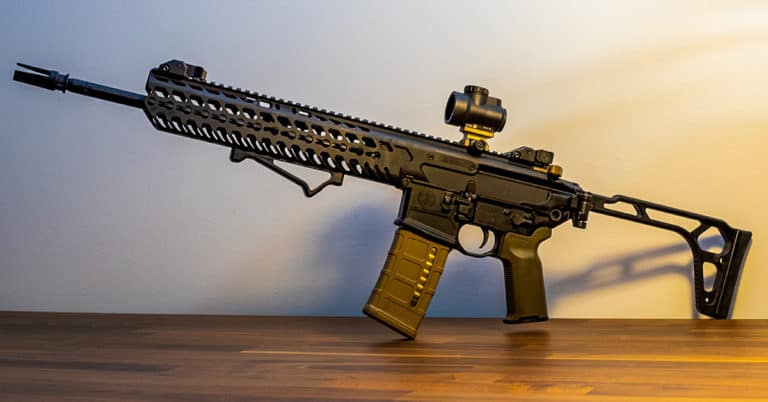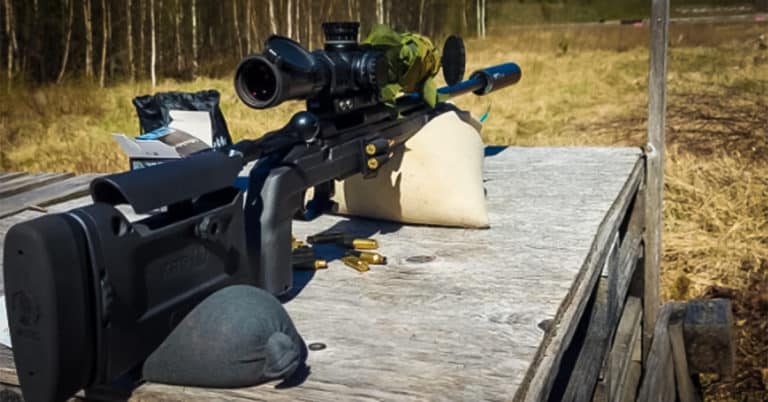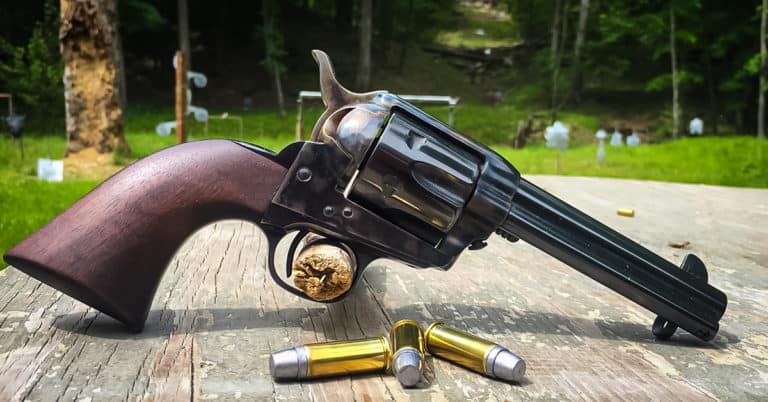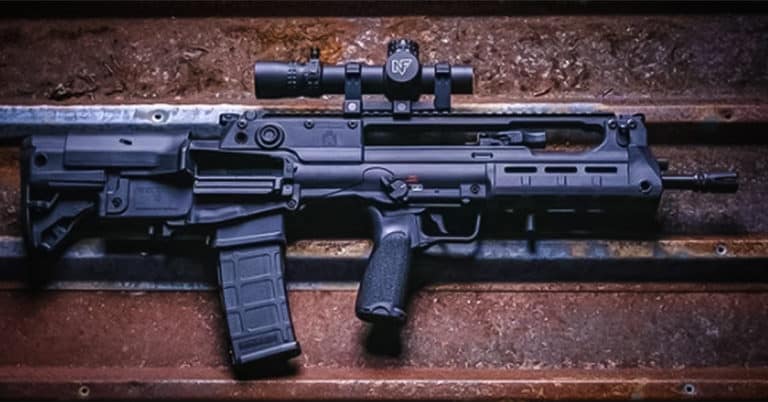Do Glocks Have A Safety?
Some people always ask if do Glocks have a safety because they do not see one on the side of the pistol.
Glock pistols are a popular choice for people who use guns because they are simple and reliable. Instead of having a manual safety lever like many other guns, they have internal safeties to help prevent accidents.
These safeties include a firing pin safety, which blocks the firing pin from moving forward unless the trigger is pulled; a drop safety, which prevents the firing pin from hitting the primer unless the trigger is pulled; and a trigger safety, which prevents the trigger from being pulled unless the person using the gun wants to shoot.
Glock Safe Action System
The firing pin safety is a blocking bar located in the pistol’s slide. It prevents the firing pin from moving forward and striking the cartridge’s primer, unless the trigger is pulled. This safety is activated when the pistol is not in use and deactivated when the trigger is pulled.
The drop safety is a spring-loaded shelf located in the pistol’s frame. It prevents the firing pin from striking the primer unless the trigger is pulled, even if the pistol is dropped or subjected to rough handling.
The trigger safety is a lever that is located in the trigger of the pistol. It prevents the trigger from being pulled unless the user intentionally presses it. This safety is activated when the pistol is not in use and deactivated when the trigger is pulled.
The Glock Safe Action System is designed to be highly effective at preventing accidental discharges.
Still, it is important to remember that all of the internal safeties are deactivated when the trigger is pulled.
Therefore, it is crucial for users to handle the pistol with caution at all times and to follow proper safety protocols, such as keeping their finger off the trigger until they are ready to shoot.
What Is A Traditional Safety?
A traditional safety is a mechanical part of a gun that helps prevent accidents. It is there to give an extra layer of protection against the gun going off by accident and to help people handle guns safely. Some standard traditional safeties are thumb, grip, and trigger safeties. It is essential to learn about the safety features of any gun you use and always to follow safety rules when handling firearms.
The Glock is a well-known and widely used pistol made in 1982. One unique thing about the Glock is that it does not have a manual thumb safety that needs to be turned off before shooting.
Instead, the Glock is made to be ready to shoot as soon as the trigger is pulled. This can be helpful in dangerous situations because it allows the user to quickly and easily use the gun.
However, it is crucial to remember that all of the internal safeties in a Glock are turned off when the trigger is pulled.
Other Common Safety Designs

One common type of safety on semi-automatic pistols is the 1911-style safety, which is usually on the left side of the pistol’s frame and is operated with the thumb of a right-handed shooter.
The slide is locked in place when this safety is on, and the hammer cannot be released. Another type of safety that is not as common is the 1911 grip safety, which is on the back of the grip and prevents the hammer from being released unless it is pressed into the frame of the pistol.
Double-action/single-action pistols, such as the Beretta 92, use the increased trigger weight from cocking the hammer as a safety feature, but only for the first shot.
This type of safety does not work for shots taken while the hammer is cocked. Some double-action/single-action pistols also have a de-cocker, which allows the user to lower the hammer to the down position without shooting the gun, even if there is a bullet in the chamber.
Some de-cockers stay in the down position and work as a safety, but others return to their original position and do not work as a safety.
Why Glocks are designed without a thumb safety

Glock pistols were designed without manual thumb safeties because the creators wanted to make them simple and easy to use.
They believed that having a manual thumb safety could slow down the user in a dangerous situation and make it harder to shoot the gun quickly.
Instead of a manual thumb safety, Glocks have internal safeties that help prevent accidents. These safeties include a firing pin safety, a drop safety, and a trigger safety.
The creators of Glock pistols thought that these internal safeties, along with proper handling and safety protocols, would be enough to keep the gun from accidentally going off.
Many people like Glocks because they are reliable and easy to use, and the absence of a manual thumb safety makes them unique.
Some people might not like that Glocks does not have a manual safety lever, but their internal safeties are very good at preventing accidents.
Safety Through Simplicity

First, it’s important to understand that Glock pistols are designed with the concept of “safety through simplicity.” This means that the guns are designed to be easy to use and maintain, with a minimum of external controls or features that can malfunction or be forgotten or ignored by the user.
This design philosophy contrasts firearms with multiple manual safeties or other external controls that must be engaged or disengaged to make the gun ready to fire.
While the lack of a manual safety may be off-putting to some shooters, the internal safeties of the Glock are designed to be highly effective at preventing accidental discharges.
Benefits Of No Manual Safety

So, given this design philosophy, why doesn’t Glock include a manual safety lever on its pistols? One reason is that manual safeties can be prone to failure or malfunction, mainly if they are not used frequently or properly maintained.
In a high-stress situation, a shooter unfamiliar with their firearm’s manual safety may fumble with it or forget to disengage it, resulting in a potentially dangerous delay in their ability to fire the gun.
Another reason is that manual safeties can be easily bypassed by an attacker or mishandled by a poorly trained user.
In a self-defense situation, an attacker could potentially force the user to disengage the manual safety of their firearm before taking control of the weapon. Additionally, the user can inadvertently disengage manual safeties while handling or carrying the gun, potentially leading to an accidental discharge.
Given these potential drawbacks, Glock has chosen to rely on many internal safeties to prevent accidental discharges.
These safeties are designed to be highly effective at preventing accidental discharges, and they do not require the user to remember to engage or disengage them.
Carrying A Glock With One In The Chamber
It is generally safe to carry a Glock with a round in the chamber, as long as the user follows proper handling and safety protocols. Many firearms enthusiasts and experts consider it to be the most effective and efficient way to carry a handgun for self-defense.
However, it is important to remember that no firearm is completely foolproof, and all firearms should be treated with caution and respect at all times. It is also important to familiarize yourself with the laws and regulations regarding carrying a loaded firearm in your area.
Importance Of A Good Holster
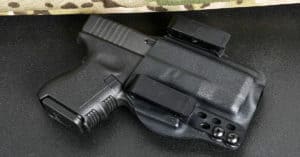
A good holster is important when carrying a concealed firearm because it helps to keep the firearm secure, prevents accidental discharges, and makes it more comfortable to carry.
A secure holster is important because it keeps the firearm in place and prevents it from falling out or being accessed by someone else. This is especially important when carrying a concealed firearm because you do not want the firearm to be visible to others or to fall out of your clothing accidentally.
A holster that prevents accidental discharges is important because it helps to keep your finger off the trigger until you are ready to shoot. Many holsters have features such as a trigger guard or a thumb break that help keep your finger away until you are ready to draw the firearm.
A comfortable holster is important because it allows you to carry the firearm for long periods without discomfort. A poorly fitting holster can be uncomfortable and may cause you not to want to carry the firearm, which defeats the purpose of carrying it for self-defense.
Good Firearm Safety Practices
It’s also worth noting that Glock recommends that users follow proper handling and safety protocols, such as keeping their finger off the trigger until they are ready to shoot, to reduce the risk of accidental discharge further.
These safety protocols, combined with the internal safeties of the Glock, help to make the guns safe and reliable for use in a wide range of situations.
Related Articles
Are Glocks Better Without A Manual Thumb Safety?
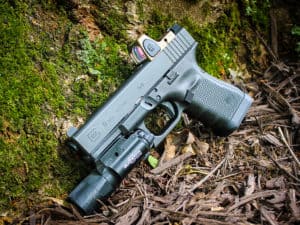
Whether or not Glocks are better without a manual thumb safety is a matter of personal preference and can depend on the intended use of the firearm.
Some people prefer the simplicity and speed of a Glock’s design, which does not require the user to disengage a manual thumb safety before firing.
This can be especially useful in high-stress, self-defense situations where quick action is necessary. Other people may feel more comfortable with a manual thumb safety, which provides an additional layer of protection against accidental discharges.
Ultimately, the choice of whether to use a firearm with or without a manual thumb safety should be based on the individual’s personal preferences and needs, as well as their ability to handle the firearm safely and responsibly.
Glocks Are Unsafe
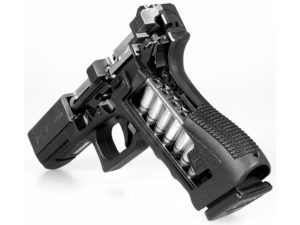
There are various reasons why some people may view Glock pistols as unsafe to carry. Some people may not have confidence in modern gun mechanics, while others may not have confidence in their own ability to handle a firearm safely.
It’s also possible that some people may have had negative experiences with Glock pistols in the past, which could lead them to view the firearms as unsafe.
Ultimately, the safety of any firearm depends on the user’s ability to handle it responsibly and follow proper safety procedures.
Here are a few things to consider:
- Some people may view Glock pistols as unsafe because they have a reputation for being easy to disassemble and maintain, which could make them more appealing to inexperienced gun owners who may not fully understand how to handle firearms safely.
- Some people may be concerned about the reliability of Glock pistols, as there have been instances of Glock pistols experiencing unexpected malfunctions or failures. While these types of incidents are relatively rare, they can be serious and may lead some people to view the firearms as unsafe.
- In addition to concerns about reliability, some people may have concerns about the safety features of Glock pistols. For example, the lack of a manual safety on some models may make them less appealing to some people who prefer firearms with more built-in safety features.
Overall, it’s important to remember that the safety of any firearm depends on the user’s ability to handle it responsibly and follow proper safety procedures. It’s also important to choose a firearm that is well-suited to your needs and level of experience.
Summary
In conclusion, Glock pistols do not have a manual safety lever like many other firearms. However, they have several internal safeties designed to prevent accidental discharges.
These internal safeties, proper handling, and safety protocols help make Glock pistols safe and reliable for law enforcement agencies, military units, and civilian shooters.
Glock Safety FAQ

What safety features does the Glock pistol have?
The Glock pistol has several safety features, including a trigger safety, a firing pin safety, and a drop safety.
How does the trigger safety work on a Glock pistol?
The trigger safety is a small lever on the face of the trigger that must be depressed in order for the trigger to be pulled. This prevents the gun from accidentally discharging if it is dropped or if the trigger is bumped.
How does the firing pin safety work on a Glock pistol?
The firing pin safety is a small block that prevents the firing pin from moving forward unless the trigger is pulled. This helps to prevent the gun from accidentally discharging if it is dropped.
How does the drop safety work on a Glock pistol?
The drop safety is a spring-loaded plunger that blocks the firing pin unless the trigger is pulled all the way back. This prevents the gun from accidentally discharging if it is dropped.
Can the Glock pistol be carried with the safety off?
Carrying a Glock pistol with the safety off and a round in the chamber is generally recommended. This is known as “condition one” carry. However, one must familiarize oneself with the proper handling and safety protocols for any firearm before carrying it.
Further reading on Firstworldcrusader.com: Are you interested in learning more about guns and gear?
This list of the Best Red Dot Sights can help you choose the best optic for your rifle.
In addition, here are the Best AR-15 Upgrades & Accessories that can help you get more out of your primary battle rifle.


